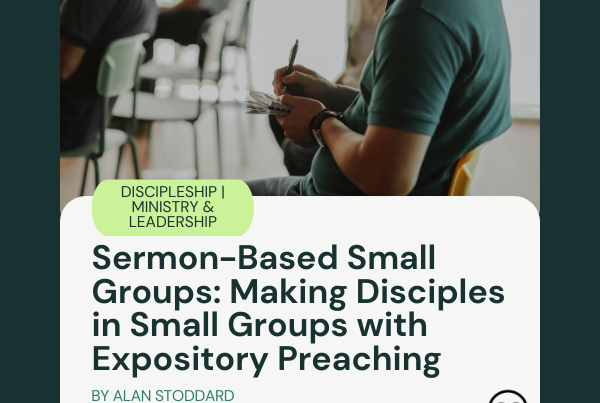
Descending into Managua, I peered through the plane’s window at Lake Managua, looking quite serene from above. Nicaragua is a land of stark contrasts. The country has more than enough natural resources to be a major tourist destination, yet it remains among the poorest nations in the world. I was there with a group of professional surfers to get content for magazine articles and advertising material. It was my first time on a professional surf trip, and I’d hoped it would be the beginning of the surf dream I’d been chasing for several years. I thought I’d finally made it to the “big leagues.”
It wasn’t my first time in a developing country, but this trip proved to be a crucial turning point in my life. Seemingly on the verge of achieving this “dream” I’d been chasing, I suddenly realized it wasn’t what I thought it would be. Instead of contemplating which board I should ride, I found myself contemplating what I wanted to do with my life. I had this underlying feeling that my focus was on the wrong thing. I began to realize that this ambition of mine was solely a selfish one; it was all about self-promotion and self-gratification. I tried to rationalize the thought, but still it lingered.
Hell’s Gate
La Chureca is a township located in Managua’s landfill. “The Dump” is inhabited by hundreds of Nicaraguans who sift through trash to find enough resources to survive. NGOs and missions organizations got involved to help the community and to raise awareness about their plight. My friend Brad Corrigan was one of them. Brad was in Nicaragua the same time we were, and in the middle of our trip, I received a message from him. He invited us along for a day to show us what this community faced.
The entrance to La Chureca is called Hell’s Gate, and I can’t think of a more fitting name. As we entered, I couldn’t help but notice the brown, smoke-filled air. We learned the trash is set aflame to keep it from piling up. But when combined with the intense Central American heat, it creates a perpetual haze. Tim Maurer, writing for Forbes, lists La Chureca among the most Horrendous Wonders of the World.[1] I watched in disbelief as children walked barefoot around the outskirts of the dump, looking for anything that might be useable. In the heart of the dump, people sifted through trash as it was unloaded by trucks. Off to the side of the trash, the people of La Chureca built their community. Homes constructed mostly of discarded trash found in the dump created a neighborhood of sorts. I won’t go into detail the horrors and dangers that people face here daily, but it’s heart-wrenching.
Brad walked us through the community and introduced us to some of the families that live there. I ducked a little as I passed through the doorway of one family’s home. The floor was simply dirt, the house itself made of dilapidated materials found in the dump. Worn-out tarps and plastic bags provided waterproofing during rains. As we entered the main living area, a lady sat uncomfortably in a chair, a bit bewildered by her visitors. Brad talked with them for a bit, explaining what we were doing. But I soon realized their conversation turned quickly from our presence in the home to the lady and the reason for her visible discomfort. A motion toward her foot and it became apparent to all what the source was.
Her foot was swollen, cracked, dry, possibly infected. She had sprained her ankle and the injury severely limited her mobility. Without access to medical care in La Chureca, even what might seem an insignificant issue can quickly turn serious. I stood speechless, feeling like anything I could offer was completely insufficient. None of us knew what to do. Then Brea Burkard, the wife of our trip’s photographer Chris, in one of the purest and most powerful acts of compassion I’ve ever witnessed, knelt next to the lady and began massaging her swollen foot. It was one of the most Christ-like acts I’ve seen, and it humbled me to my core.
Not much was said in the car ride as we left La Chureca. The visit exposed me to a reality I’d heard about but only viewed from a distance, a reality that for most of my life didn’t seem real. The contrast of what I was pursuing in Nicaragua and what those who served the people in La Chureca were pursuing wasn’t lost on me. Brad’s invitation changed my life’s direction.
Seeing Past Ourselves
Please don’t misunderstand the point I’m making. I don’t believe we all need to quit our normal jobs to pursue non-profit work. I don’t believe it’s wrong to be successful in business or whatever profession one may be in. And it’s not that I believe the dream I’d been chasing was a bad one, or that professional surfing, surf journalism, or the surf industry are bad careers. I think they can be fine careers, and I’m happy for those who have been able to be successful in them. But what that trip did do for me was confirm a truth I’d been taught since I was young—that life gets better through selflessness, not selfishness. No matter how successful one may be at their chosen pursuit or passion, if you live solely for selfish ambition, you will in the end find only emptiness and vanity, not fulfillment and purpose.
That trip to Nicaragua taught me an important lesson. It taught me the difference between healthy, God-given ambition and selfish ambition. Healthy ambition is the desire to be good stewards with the talents we’ve been given. It’s living with the understanding that we all have an eternal purpose to fulfill; life is more than just self. In contrast, selfish ambition enthrones self, making the goal of life to gratify and magnify self above all else.
The Truth About Giving
“For God so loved the world that He gave His only begotten Son, that whoever believes in Him should not perish but have eternal life” (John 3:16).
This is perhaps the most well-known verse in the Bible, for good reason. In it we find God’s free offer of salvation and His unfathomable love for us. And we are given one of life’s greatest truths—that God gives. He is a gracious and generous God. He loves, so He gives. It’s at the heart of who He is and how He made life to operate. The world leads us to believe we will find fulfillment in this life by getting, but God has told us fulfillment in this life comes by giving. It can’t be experienced through a self-centered outlook in life.
Our lives get better, and our story gets bigger as we give. God gave and as a result, salvation is available to all creation. Since we are made in God’s image, somewhere within each of us the truth testifies that it’s more blessed to give than to receive. Interestingly, secular science is discovering this truth as well. The Science of Generosity, a report by The Greater Good Science Center at UC Berkeley suggests that generosity is directly linked to a person’s overall happiness. It states, “While popular culture may imply that happiness comes from focusing on yourself, research suggests the opposite: Being generous can make you happier.”[2]
One of the first lessons Jesus taught is that we must think differently from the way popular culture has taught us to think. It might seem counter-intuitive, but the truth is that life gets better and more purpose-filled through generosity, not self-promotion or accomplishment. God has declared this to us throughout Scripture:
“A generous person will prosper; whoever refreshes others will be refreshed” (Proverbs 11:25).
“Give, and it will be given to you. A good measure, pressed down, shaken together and running over, will be poured into your lap. For with the measure you use, it will be measured to you” (Luke 6:38).
“Good will come to those who are generous and lend freely, who conduct their affairs with justice” (Psalm 112:5).
A culture that prizes self above others will produce people who are largely unhappy and unfulfilled, ever in search of purpose and direction in life. They’ll seek their fulfillment through selfish ambition and self-promotion, through accumulation of wealth and power. They’ll be lovers of self and as a result, their morality and justice will be determined by what suits them best, not what’s righteous. I’m not trying to paint a hopeless picture but rather reveal what’s at stake. If we aren’t willing to see past our own immediate gratification, we’ll never find the purpose and identity we seek.
A Life Filled with Purpose and Fulfillment
Some would say my life didn’t change much after that trip to Nicaragua. I didn’t stop surfing, and I haven’t been back to Nicaragua since. But it did teach me one simple yet profound truth that remains with me to this day. It taught me that no matter what we achieve in this life, if it’s self we’re seeking to magnify and not Jesus, it’ll ultimately leave us empty and unfulfilled.
God gives because it’s part of who He is; giving is an attribute of love. As His children, bearers of His image, it’s meant to be one of our attributes as well. And it starts by being able to see past ourselves. When we do, we find we have taken the first step toward a life filled with purpose and fulfillment, a life that touches the lives around us, a life that impacts eternity.
References
[1] Tim Maurer, “Hope in Hell On Earth: Micro-Finance in Nicaragua,” Forbes.com, July 26, 2012.
[2] Summer Allen, The Science of Generosity, page 23, prepared for the John Templeton Foundation by The Greater Good Science Center at UC Berkeley, May 2018.










